Check Out This Guide:
CUSTOMER CONNECTIONS ON TAP: A GUIDE TO USING DATA FOR MARKETING
Industry Insights
JAN 20, 2022
Share
Sustainability isn’t just a trending topic or a buzzword these days. It's what people want – and they’re putting their money where their mouth is. For Millennials and Gen Z, who make up more than half of the global population, eating is more than just fueling the body. The diet preferences of these groups are more centered around overall wellness, animal welfare, and sustainability. Over 70% of Millennials and Gen Z consumers are willing to pay more for sustainable products and services. So what does this mean when it comes to food and the restaurant industry?
The desire for sustainable options is directly correlated to the concern about climate change and its impact in the coming years. Restaurants are participating in the shift towards more sustainable ways of living and dining. It’s both a goal and a challenge for brands to make their offerings and overall experience more sustainable.
While going green is more popular than ever before, and things like adding vegan options and banning plastic straws are trending, there’s more to making a restaurant more sustainable.
Imagine a restaurant that runs on 100 percent renewable energy, produces no waste, captures and recycles water, supports and helps grow local farms, has a customer line out the door, and has local community members eager to get hired. Is this something you would support?
A sustainable restaurant is one that makes a meaningful effort to reduce its impact on the environment through waste reduction, energy conservation, and more. Sustainability for restaurants means operating in a way that protects, preserves, or restores the natural environment, promotes social equity, while also enhancing the lives of people and communities. It lessens its environmental footprint while still contributing to economic prosperity.
Creating a sustainable restaurant is one of the better things you can do for the planet – and for your bottom line. Restaurants around the world are sourcing more local produce, minimizing waste, and reducing energy use. Part of the drive to sustainability is because of freshness and flavor – it tastes better. The other part is the recent resurgence of sustainable practices in restaurants is because it’s simply what people are looking for.

This brand new Starbucks uses LED lighting, recycled flooring tiles and wood products that are certified by the Forest Stewardship council. They are 25% more energy efficient and 30% more water efficient. Source: The Current Daily.
If you’re a restaurant owner, you’re well aware of your energy, water, and electricity costs. A study by Pacific Gas and Electric’s Food Service Technology Center shows that 80% of the $10 billion annual energy bill for the commercial foodservice sector is spent on inefficient food cooking, holding, and store equipment. As a result, sustainable practices could reduce restaurant operating costs by up to 30%.
Untapped efficiencies hurt both your bottom line and the environment. Look into how you can optimize both your restaurant’s energy and water usage and waste production to save on your bills and reduce your environmental impact.
People tend to choose brands that align with their personal values. Your customers – and your staff – are more likely to stick around when your restaurant practices are implemented in similar values, like sustainability. According to the National Restaurant Association, 58% of Millennials are “more likely to choose one restaurant over another based on its ability to provide sustainably grown, raised and manufactured foods.”
Check Out This Guide:
CUSTOMER CONNECTIONS ON TAP: A GUIDE TO USING DATA FOR MARKETING
It goes without saying that energy-saving efforts and reducing waste have a positive impact on the planet. Just because you’re lowering your brand’s carbon footprint, implementing sustainable practices doesn’t have to negatively affect your profit. In fact, it can have the opposite effect. For example, is it more expensive to buy energy-efficient equipment than the standard item? In a word, yes—but there is long-term value and you save on energy costs. You’re also helping your restaurant attract the 20% of millennials who have changed their diet to reduce their impact on the planet. Another added bonus is an added competitive difference to your competition.
The number one thing you can do to make your restaurant more sustainable is to keep your menu seasonal. Sync your menu with seasonal produce – meaning the food is grown at the same time of the year you consume it. In-season produce is generally grown closer to where it’s sold, meaning it doesn’t need to travel to you from another country or continent. In-season produce also tends to be less expensive because it’s currently more abundant. Be creative with your menu to swap in seasonal produce when possible. Operating this way requires a certain amount of flexibility on the part of the kitchen staff, but the quality (and taste) is well worth the effort.
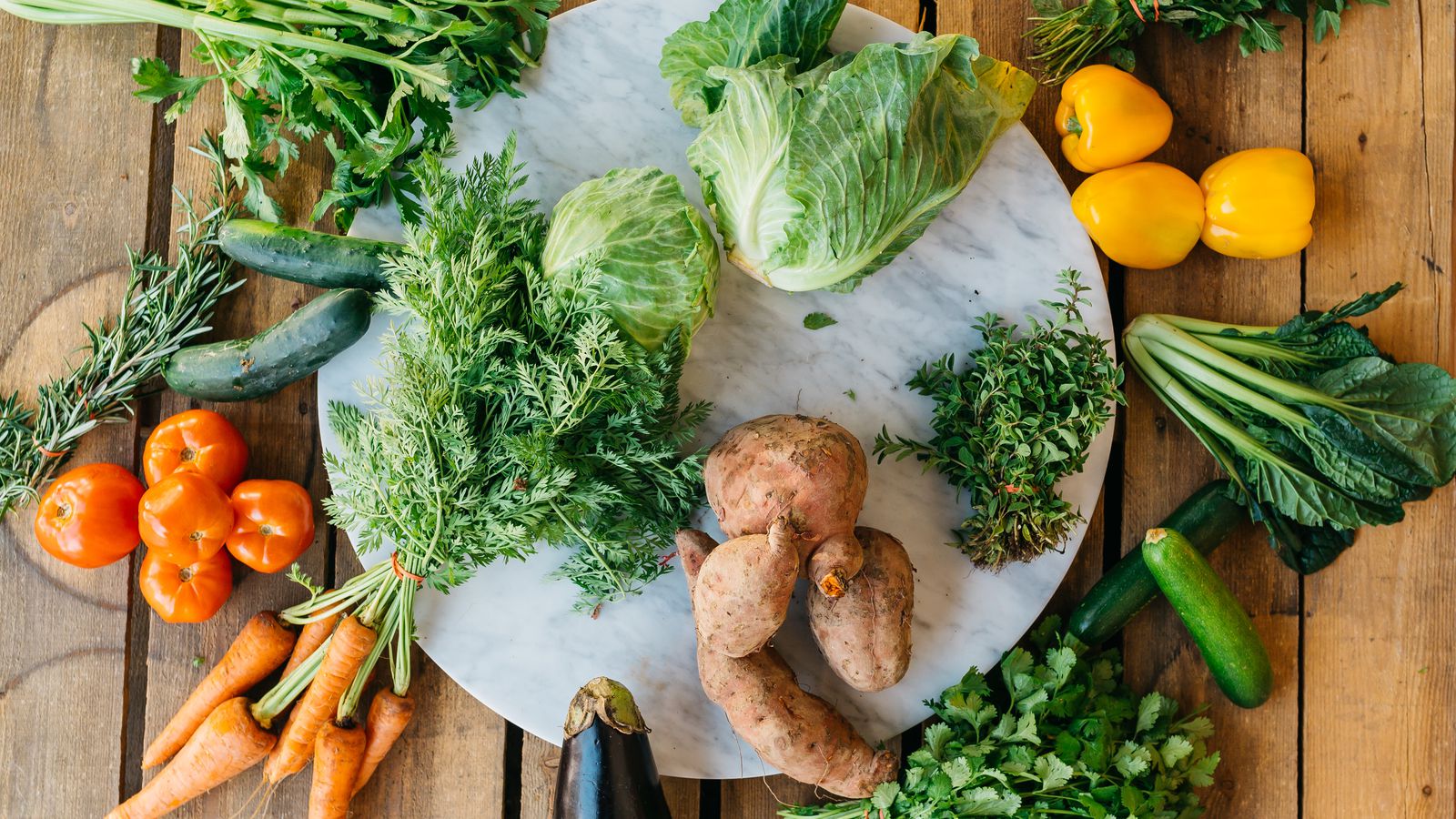
Source: Naked Farmer in Tampa Bay Times
When it comes to sourcing ingredients, look for local suppliers to purchase peak-season produce. And where possible, source organic ingredients. Unlike conventional farming, organic farming has a number of benefits for the environment, like encouraging healthy biodiversity, less air pollution, and maintaining good soil.
To go a step further, if you have the space and resources, you can dedicate a kitchen garden for the restaurant. Grow your own herbs, greens, root vegetables, and whatever else you have the conditions for. It is sourced ultra-fresh, it’s basically free, and it gives your cooks a new appreciation for those items in their cooking. You also eliminate food waste entirely if you take only what you need.
Naked Farmer, a farm-to-fork restaurant in Tampa, FL, serves locally-sourced, seasonal food. Their menu is driven by the seasons and is sourced from a direct network of small and medium-sized farmers in their region. They have a goal of maintaining 100% locally-sourced menu items that change with the seasons.
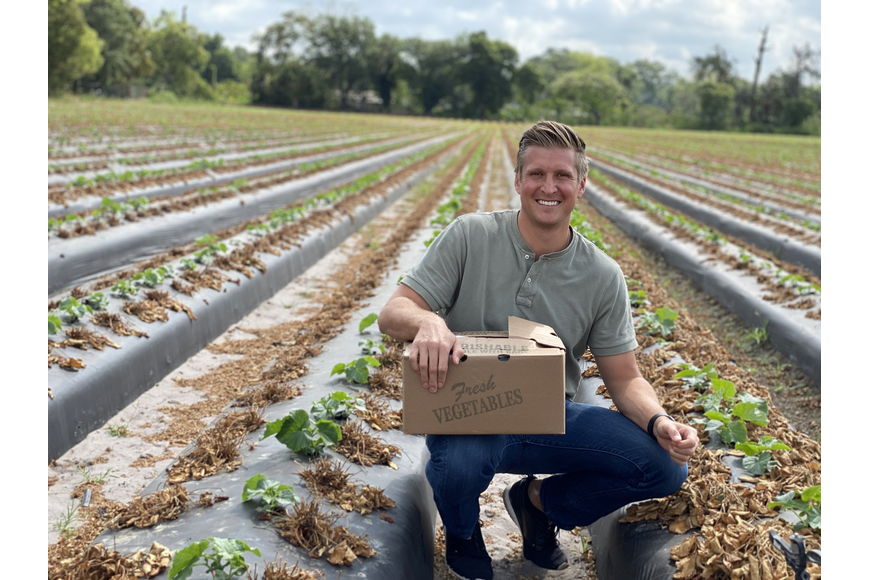
Source: Naked Farmer founder, Jordan Johnson, in the Business Observer
Becoming a zero-waste restaurant is tough, and you don’t have to do it 100% to be considered sustainable. There are many ways to make your operations more eco-friendly. Reduce or eliminate single-use plastics (bags, straws, and disposable cutlery) and replace them with paper, bamboo, or compostable options. Even fast-food brands like KFC, Burger King, Taco Bell, and McDonald’s have announced packaging revamps. Burger King announced in 2021 a green packaging pilot program focused on finding scalable solutions for eight of the most-used, guest-facing items including forks, spoons, knives, straws, drink lids, Frypods®, Whopper® wrappers, and napkins.

Source: Packaging World
The U.S. discards more food than any other country, nearly 30-40% of the entire American food supply. Every year, American consumers, businesses, and farms spend $218 billion a year growing, processing, transporting, and disposing of food that is never eaten. This massive inefficiency not only creates large financial costs but has a hefty environmental impact as well. Food waste contributes to 11% of the world’s greenhouse gas emissions.
If you aren’t already, get a sense of what you’re over-ordering from suppliers and what’s not selling. Use this info to scale back your orders, adjust your menu, and reduce portion sizes accordingly. You can also conduct a food audit by asking your staff to sort food waste into three different bins for spoiled food, kitchen scraps, and customer waste. By tracking what and how much you’re throwing away, you see first-hand how much you’re actually wasting and really look for ways to reduce spoilage and repurpose leftover ingredients.
Restaurant sustainability efforts extend outside of food. Look for local craftspeople who build furniture from repurposed lumber and other materials. Look for reclaimed materials like flooring, fixtures, decor, and furniture. Look for ways where upcycling or sustainable alternatives can be an option in your physical space. Not only will you be recycling materials, but your restaurant will also look like no other.
San Francisco-based restaurant, The Perennial, is regarded by many as America’s most sustainable food eatery. They go as far as using 100-percent recycled fiber rugs, reclaimed lumber, clay plates, and re-used silverware to reduce their carbon footprint.
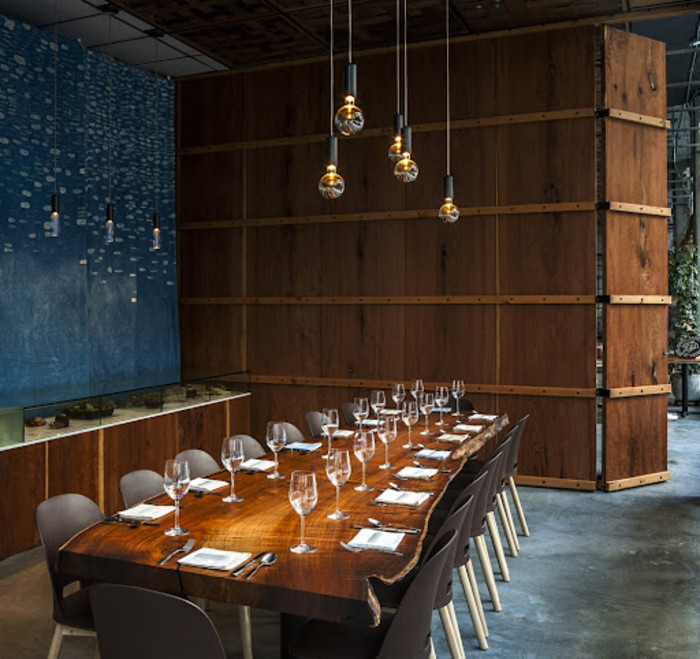
Source: The Perennial in Bon Appetit
Boomerang Water is the world’s first on-site, micro-bottling solution to economically replace plastic water bottles. They are committed to disrupting current water bottling practices to end single-use plastic and shipping.
Boomerang Water is on a mission to rid the world of single-use plastic water bottles by creating sustainable and returnable bottling solutions.
We want people to start thinking differently about single-use plastics and turn their attention toward returnability. Unfortunately, we know that recycling is not working well. A single-use plastic bottle generally sits in an environment for up to 400 to 700 years, and because only 9% of plastic products actually get recycled we have a massive plastic dumpsite on our planet. The negative impacts from plastic waste are well-documented and undeniable. This is why we are creating a movement that focuses on returnability. We’re looking to help change the world one bottle at a time.
We are excited to have recently opened our first retail bottling location in Davidson, NC. We are working closely with the Town of Davidson to establish and action a new sustainability initiative to reduce single-use plastic bottles in the community. Together, with local Main St. businesses, we have already significantly reduced plastic waste in the town. We are excited to open our first franchise location in Lexington, KY this coming March.
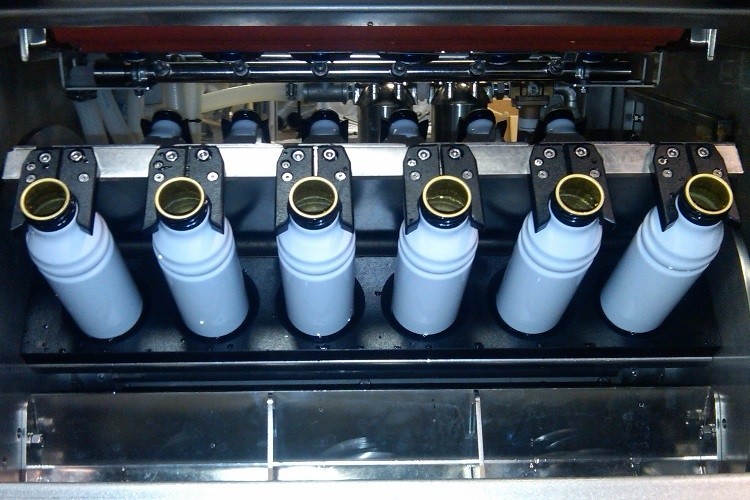
Source: Beverage Daily
EVOS is a fast-casual restaurant offering all-American fare like burgers, wraps, bowls, salads, and shakes – without the guilt. They make their food with simple, natural ingredients, and their packaging is made with sustainable materials. You can find their 4 locations in Florida (made with sustainable building materials and running in part on renewable energy sources).
Our mission is to help others feel great about themselves and the world around us. We look to offer more than just healthy food – we offer a food experience with a greater good conscience that nourishes the mind and heart, builds community, and inspires positive change in ourselves and others.
By being at the leading edge of sustainability. Sustainability is embedded in the DNA of the brand, which we are proud to say dates all the way back to our roots when we first launched in 1994. Our business is not just a job to us – it’s the way we live our lives. Our mission and philosophies have shaped our sustainable business model that balances healthy profits and growth with a passion to serve people and make a difference.
Our 100% carbon footprint offset initiative! We offset 100% of our restaurant energy usage with renewable wind and solar energy. One store alone has the environmental impact equivalence of taking 5 cars off the road or planting over 9 acres of trees every year. We’re industry-recognized and extremely proud of this initiative.
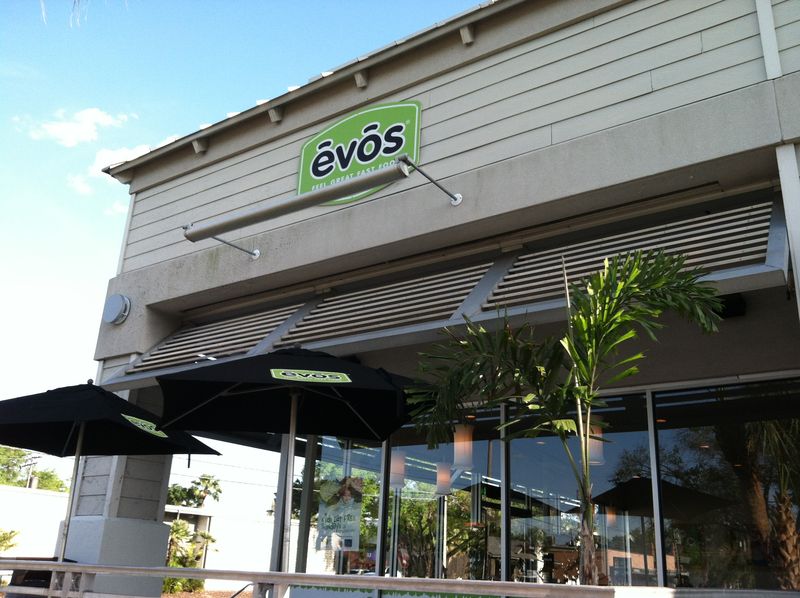
Source: VegBlogger
Naked Farmer aims to transform the norm by sourcing the freshest, most seasonal, and locally-sourced food in town. You can find their four locations in the Tampa, FL area.
Our mission is to build a better food system by connecting farmers to the community.
We think about the ecosystem holistically when it comes to sustainability. For us, it starts with food waste.
Whole vegetables: We serve whole vegetables as much as possible and use vegetable leaves, stems, and zest of fruits in our recipes to reduce waste and respect the earth.
'Ugly' vegetables: While so many in the world go hungry, produce that doesn't fit visual standards to sell in farmers' markets or grocery stores stills can end up in a landfill. We take these delicious and nutritious vegetables and create recipes to save those blemished, uneven, too short, too long – and cook them with love. Offering them on our menu when they otherwise would be thrown away.
Nose-to-tail meats: Our commitment to our farmers is to sustainably source whole animals, to respect each life, and educate our community about cuts of meat that are lesser-known. Our grass-fed beef rotates weekly based on what's fresh. When our free-range chicken farmer has a surplus of wings, we create a recipe and cook them up to offer them on our menu as a weekend special.
My favorite sustainability initiative is takeout food in reusable containers. We're interested in investing in this within our restaurant group as its good for the community, and for the planet.
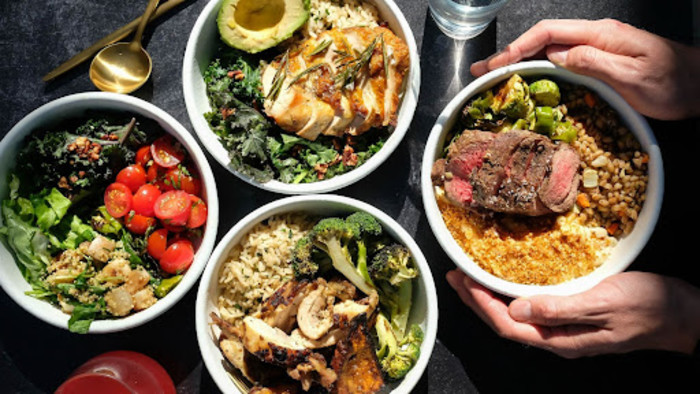
Source: Naked Farmer
A great thing to remember is: we don't need a handful of brands doing sustainability perfectly – we need millions of brands doing it imperfectly. As you make your shift towards more sustainable ethos, your first priority as a restaurateur is still to deliver an exceptional guest experience. Offer information through staff education, your website, and even your menu, so guests can ask for more details about sourcing and sustainability if they want them.
ENTER YOUR EMAIL TO STAY IN THE KNOW!